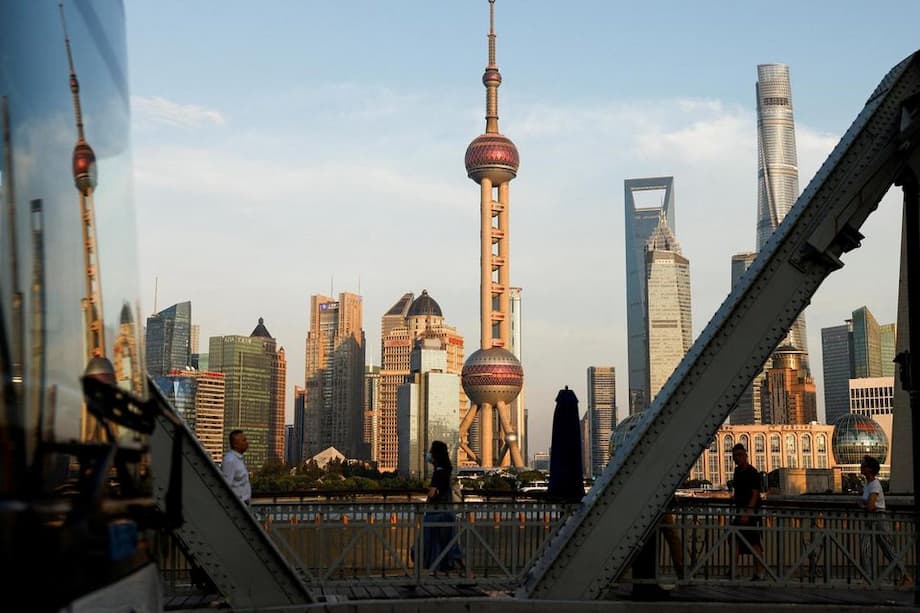China’s Stock Market Resurgence: What’s Fueling the Rally in 2025?
After years of volatility and underperformance, China’s stock market is experiencing a remarkable resurgence in 2025. The benchmark CSI 300 Index has climbed more than 15% from its April lows, and the Shanghai Composite is approaching a four-year high. This rally is occurring despite the absence of major new stimulus measures or a finalized trade deal with the United States. Instead, a combination of ample domestic liquidity, shifting household investment patterns, and targeted policy support is driving renewed optimism among investors both in China and abroad.
- China’s Stock Market Resurgence: What’s Fueling the Rally in 2025?
- Why Are Chinese Stocks Rising Now?
- How Is Government Policy Shaping the Market?
- Which Sectors Are Leading the Rally?
- Are There Risks to the Rally?
- What Does This Mean for Global Investors?
- How Is the Broader Economy Responding?
- Expert Perspectives: Is the Rally Sustainable?
- In Summary
China’s stock market capitalization surpassed US$11 trillion in early 2025, making it one of the world’s largest and most influential equity markets. The resurgence is being closely watched by global investors, policymakers, and analysts, as it could signal broader improvements in China’s financial system and economic outlook.
Why Are Chinese Stocks Rising Now?
The current rally in Chinese equities is notable for its quiet momentum. Unlike previous bull markets, which were often fueled by aggressive government stimulus or speculative frenzy, this resurgence is rooted in several fundamental shifts:
- Ample Domestic Liquidity: Chinese households are sitting on record-high savings, a legacy of years of cautious spending and pandemic-era uncertainty. With interest rates drifting lower and traditional savings products offering meager returns, many are turning to the stock market in search of better yields.
- Surge in Margin Loans: The amount of margin loans—borrowed money used to buy stocks—has reached its highest level since 2015. This indicates rising risk appetite and confidence among retail investors, who dominate daily turnover in China’s markets.
- Rising Turnover and Retail Participation: Monthly average turnover on onshore exchanges is climbing, and small-cap indices favored by individual investors have hit multi-year highs. Cinda Securities expects retail flows to accelerate further in the second half of 2025, buoyed by optimism over the government’s five-year development plan and robust money growth.
- Policy Moves Targeting Overcapacity and Price Wars: Beijing has taken steps to curb excessive price competition and overcapacity in key sectors, which investors see as efforts to ease deflation and boost corporate earnings.
- Improving US-China Trade Sentiment: While a comprehensive trade deal remains elusive, a truce in tariff escalation and signs of improving relations have helped lift risk sentiment.
As Fu Zhifeng, chief investment officer at Shanghai Chengzhou Investment Management Co., explained,
“Funds with a high risk appetite are gradually increasing their allocations to stocks, against the backdrop of low interest rates, a lack of good investment options, and a surplus of liquidity. The trend has just started building momentum and I don’t see any signals for it to reverse anytime soon.”
How Is Government Policy Shaping the Market?
While Beijing has not unleashed a massive new stimulus package, targeted policy support is playing a crucial role in the market’s recovery. The government has directed large financial institutions, including state insurers and mutual funds, to increase their equity holdings. The China Securities Regulatory Commission (CSRC) now requires big state insurers to invest 30% of new policy premiums in China-listed shares, and mutual funds are expected to grow their stock holdings by 10% annually for three years. These measures could channel at least 1 trillion yuan into domestic stocks each year, providing a steady source of demand.
Additionally, the government’s “Consumption Boosting Action Plan” aims to increase household income, protect spending power, and support key sectors such as technology, consumer goods, and services. Subsidies for big-ticket items like cars and home appliances, along with expanded social safety nets, are designed to stimulate demand and create a wealth effect that supports both consumption and investment.
On the regulatory front, China’s Nasdaq-style STAR Market has approved its first unprofitable IPO under revived rules, signaling renewed support for innovative but loss-making firms. This move is intended to foster technological innovation and attract capital to high-growth sectors.
Hong Kong’s Role and Dual Listings
Hong Kong’s capital markets are also benefiting from the resurgence. Policy incentives from both mainland and Hong Kong regulators have led to a surge in A-share listed companies seeking dual listings in Hong Kong, especially in technology and advanced manufacturing. The Hong Kong Exchanges and Clearing (HKEX) has introduced fast-track review channels for qualified companies, and the city is positioning itself as a global hub for hard tech and biotech IPOs. The largest IPO globally in 2025—CATL’s debut—underscored Hong Kong’s renewed vitality as a fundraising center.
Which Sectors Are Leading the Rally?
Technology stocks are at the forefront of China’s market gains in 2025. The tech-focused STAR50 index and semiconductor stocks have outperformed, reflecting investor enthusiasm for innovation and digital transformation. Major Chinese tech companies like Alibaba and Tencent have seen their shares surge—Alibaba is up 70% year-to-date, driven by robust earnings and advancements in artificial intelligence, while Tencent has gained 30%.
The iShares China Large-Cap ETF (FXI), which tracks the FTSE China 50 Index, has delivered a year-to-date return of over 26%, far outpacing US benchmarks like the S&P 500. This performance has prompted some global investors to reduce allocations to US equities in favor of China, seeking exposure to dynamic sectors such as technology, financials, and telecommunications.
Consumer-focused companies are also benefiting from government stimulus and rising household income. The consumer sector has outperformed the broader market since the announcement of the 2025 stimulus plan, with particular strength in home appliances, electric vehicles, and tourism. The government’s trade-in program for consumer goods and expanded subsidies are expected to drive further demand in these areas.
Are There Risks to the Rally?
Despite the positive momentum, skepticism remains about the sustainability of the rally. Some analysts argue that without a meaningful recovery in corporate earnings and broader economic prospects, the gains may prove fleeting. The Chinese economy still faces significant challenges, including:
- Deflationary Pressures: Persistent low inflation and weak consumer demand could undermine corporate profitability.
- Property Market Slump: Real estate remains a key component of household wealth in China, and ongoing weakness in the property sector could dampen consumer confidence.
- Government Debt and Demographics: High levels of local government debt and an aging population pose long-term structural risks.
- Geopolitical Tensions: Trade disputes and regulatory uncertainties, especially regarding US-China relations, continue to create volatility.
As one analyst at Chanson & Co. put it,
“The divergent performance among sectors suggests there is no systematic improvement in the market yet. The rally is unlikely to sustain without a meaningful recovery in earnings and economic prospects.”
Furthermore, the market remains heavily retail-driven, with individual investors accounting for 70% of daily turnover. While institutional participation is rising, the dominance of retail trading can amplify volatility and speculative swings.
What Does This Mean for Global Investors?
The resurgence of China’s stock market is reshaping global capital flows. As US equities face headwinds from stagflation concerns and trade tensions, investors are increasingly looking to China and other emerging markets for growth opportunities. Chinese stocks are trading at historically low valuations relative to their US counterparts, and many leading tech names are engaging in aggressive share buybacks, signaling management confidence.
Foreign capital is starting to flow back into Chinese equities, with over $56 billion in inflows to Hong Kong-listed growth stocks in the first quarter of 2025. ETFs like FXI offer international investors diversified exposure to China’s largest and most dynamic companies, without the complexities of buying individual stocks in foreign markets.
However, investing in China is not without risks. Regulatory uncertainties, differences in corporate governance standards, and currency fluctuations can introduce volatility. It is essential for investors to maintain a diversified portfolio and stay vigilant about external factors that could impact China’s markets.
How Is the Broader Economy Responding?
The stock market’s recovery is part of a broader effort by Chinese policymakers to stabilize and revitalize the economy. The government’s focus has shifted from supply-side investment to demand-side support, with measures aimed at boosting household income, supporting consumption, and fostering innovation. The 2025 Government Work Report emphasized the importance of improving people’s lives, expanding social safety nets, and supporting new industries such as artificial intelligence, autonomous driving, and digital services.
Middle-income households are expected to benefit from property and stock market stabilization, as property assets make up over 70% of household wealth in China. Policies to lower home loan interest rates, acquire idle land for development, and encourage institutional investment in equities are all part of the strategy to create a positive wealth effect and stimulate spending.
Supply-side reforms are also being implemented to avoid overinvestment in saturated industries and promote sustainable growth in emerging sectors. The government is promoting tourism, culture, and the expansion of Chinese brands overseas, aiming to create new engines of economic growth.
Expert Perspectives: Is the Rally Sustainable?
Market strategists at major banks, including Citigroup and Goldman Sachs, have raised their outlook on Chinese stocks, citing improving risk sentiment and policy support. Local insurance funds and mutual funds are providing additional stability, and analysts at China International Capital believe the rally is far from over, given the increasing willingness of residents to invest in equities.
Yet, some experts caution that the core issues facing China’s economy—such as weak household income growth, employment concerns, and demographic shifts—must be addressed for the market recovery to be truly sustainable. As one Reuters analysis noted,
“China must address underlying macroeconomic issues for these efforts to have lasting impact, noting that household income and employment, not the stock market, have historically driven consumption.”
For now, the combination of liquidity, policy support, and investor optimism is creating a favorable environment for Chinese equities. The challenge will be to translate these gains into lasting improvements in corporate earnings, economic growth, and household wealth.
In Summary
- China’s stock market has staged a strong resurgence in 2025, with major indices up double digits from recent lows.
- The rally is driven by ample domestic liquidity, rising household investment in equities, and targeted government policies.
- Technology and consumer sectors are leading the gains, with major tech firms like Alibaba and Tencent outperforming.
- Hong Kong’s IPO market is also benefiting, with a surge in dual listings and policy support for innovative companies.
- Risks remain, including economic headwinds, property market weakness, and geopolitical tensions.
- Global investors are reallocating capital to China, attracted by low valuations and growth potential, but must remain mindful of regulatory and market risks.
- The sustainability of the rally depends on broader economic recovery, improved corporate earnings, and continued policy support.












